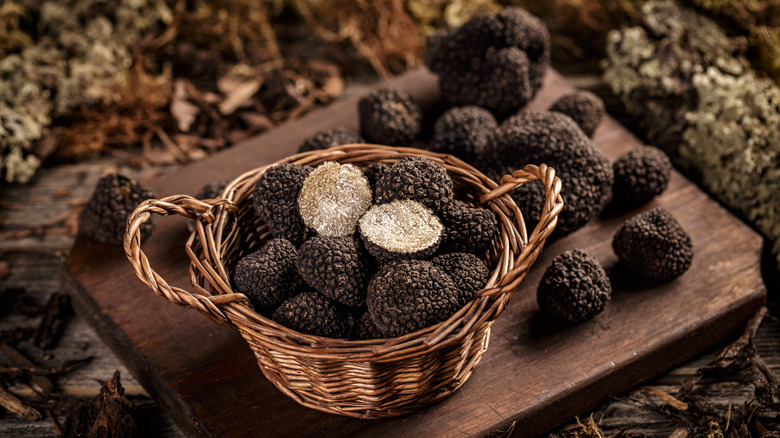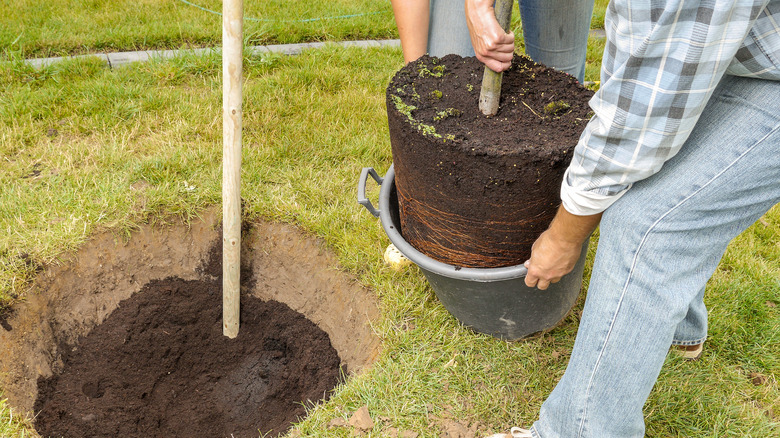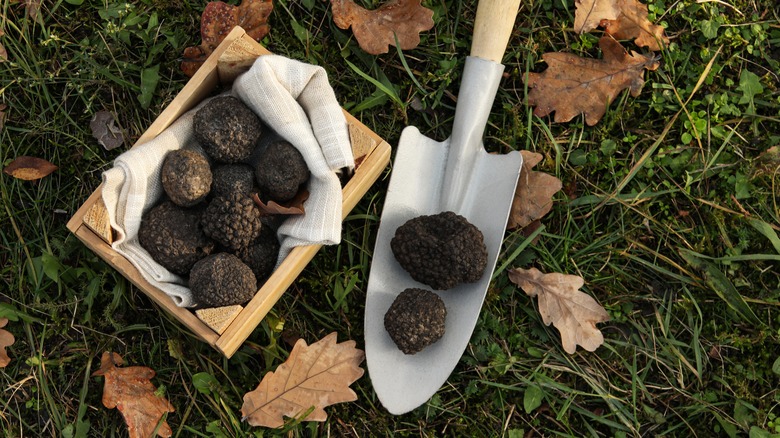Can You Grow Truffle Mushrooms At Home?
Truffles are used in some of the tastiest pasta and seafood dishes, but it is sadly one of the more expensive foods you can buy. However, much like other produce items, it shouldn't be surprising that you can grow these in your backyard at a much more affordable rate. Grown all around the world with multiple varieties available, truffles don't look like typical boletus mushrooms and are closer in resemblance to little potatoes. Truffles are very common in France, Italy, and Spain, with the white truffle being one of the most popular variations. If you have never tasted a truffle, it is described as sweet and nutty yet slightly savory. One of the reasons growing these should interest you is that these fungi can retail for more than $3,000 per pound.
Another motivation is that these mushrooms have abundant health benefits, being prolific in nutrients like vitamin C, calcium, iron, and magnesium. They are also free of cholesterol, low in fat, high in protein and fiber, and have been found to kill cancer cells and reduce inflammation. Truffles grow underground at the base of tree roots and can take three to seven years before being ready for harvest. While they can be hard to produce, it is possible to farm them from your home, and they are well worth the wait.
Choosing your tree
The tricky thing about truffles is that there is no seed packet to buy or any way to produce them commercially. The best you can do is grow suitable trees in optimal conditions, which means thoughtfully choosing a tree is crucial. Your tree can be grown in a pot or right outside, but either way, a tree is necessary. Truffles only grow under specific types of trees, such as oaks, hazels, beeches, poplar, birch, and pine. Hazel trees resemble shrubs and are great if planning to grow in a pot, but oaks are some of the most common and successful truffle trees.
Oak roots provide truffles with incredibly rich nutrients and produce tannins, which help keep predators away. Buying trees that already have truffles spores developed by companies like One Green World is also beneficial. When it comes to your soil, truffles thrive primarily in a pH of 8 and a well-aerated mixture that's abundant in sodium, magnesium, and calcium. If your pH is too low, lime and wood ash can be applied to increase it.
Planting your tree and finding truffles
Your tree's first year of care is vital to successfully harvesting truffles. The tree must be well-established and healthy after its first year of growth, and creating a steady watering schedule will ensure this. New trees also typically require a hefty amount of water; however, after a year has passed, rainwater will be sufficient. You won't want to use any fertilizer as that can change the taste of the truffles and harm their growth. While truffles do best in Fahrenheit temperatures of the low 70s, they are hardy enough to survive hot summers and cold winters. If you're worried about the weather in your area, choosing to pot your tree will allow you to bring it indoors when needed.
Patience might be tested as you wait for four years or more for your first ready-to-harvest truffles, but you should know what to look for when the time comes. While dogs, pigs, and even horses are often used to sniff out and dig up ripe truffles, you can easily complete this task yourself. Common signs that your mushrooms are ready include cracked soil, dead patches of grass, and an increased interest from squirrels and raccoons that can smell the delicious aroma. The truffles usually sit between 1 to 6 inches below the surface, and they will be soft and easy to remove when fully mature. In what will feel like no time at all, you'll be able to craft tasty dishes and make a profit.


